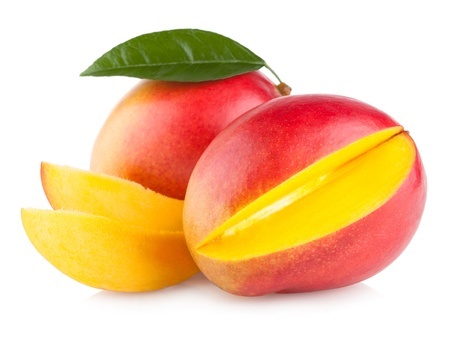
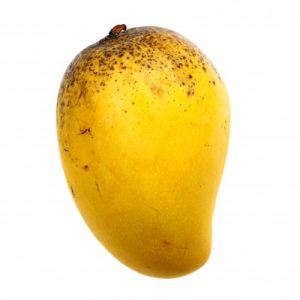
The mango (Mangifera indica L. Family: Anacardiaceae) is one of the most popular and commercially important crops in the world, especially in India, China, Burma (Myanmar), Malaysia, Thailand and Brazil. It is certainly in the top 5 tropical fruit crops and a valuable cash resource for many countries.
Cultivars
There are over a thousand cultivars of this fruit available but all are characterized by their bright colours between pale green, ochre yellow, orange and red, or a mix, and all with a high nutritional content. They can be grouped into four main types, and all have a distinctive characteristic and rich flavour. The most important and famous is the cultivar ‘Alphonse‘ which has a soft, slightly perfumed and musky flavour. Other cultivars commonly encountered are ‘Tommy Atkins’, ‘Nam Dok Mai’, ‘Keitt‘, ‘Kensington Pride’ and ‘Kent’. Lets not forget Tainong which is commonly grown in China.
Product Development Opportunities
Consumer acceptance of the fruit and its products depends on a host of quality criteria which are outlined below (Gholap et al. 1986). It is extremely versatile in product development, being used in beverages as a puree or nectar, in pickles, chutneys, as fresh fruit or as canned slices, on its own or in combination with other fruits, especially tropical ones. The fruit is also pulped and processed aseptically to provide fruit bases or dried and dehydrated for fruit leathers. The demand for the fruit is growing continuously but at affordable prices (Sauco, 2004). The puree is often reprocessed into jam, jelly, pulped beverages and incorporation into both bakery and dairy products (Brekke et al., 1975).
Sensory Properties
The aroma has been analysed from a wide variety of cultivars e.g. c.v. Kensington (Macleod et al., 1988), Brazilian varieties (Ackerman and Torline, 1984) and more comprehensively by Pino et al., 2004). The flavour of mango has been further characterized (Johnson et al. 1997, Grundhofer et al. 2001). A study on the changes in the aroma composition during development was made and is a useful account of how ripening affects fruit quality (Pandit et al., 2009).
Production
India has devoted nearly 1.6 million hectares to mango cultivation (FAO, 2005). Much of the South American fruit is exported to both the USA – the leading purchaser which took over 33% of the crop and along with Indian fruit to Europe (FAO, 2013). Over 39 million Tonnes of mango were produced globally in 2011 following an upturn in cultivation from 2009 of 12% (FAO-STAT, 2013). China produces about 4.4 million tons annually and represents 12% of total production in 2012.
Nutrition
In nutritional terms, mango has a high fibre content and is a strong source of antioxidants such as vitamin C (ascorbic acid). A mango on its own could provide up to half the recommended daily intake of ascorbic acid, one example yielding up to 179 mg/100 g fresh weight (Robles-Sanchez et al., 2009). The fruit contains high amounts of polyphenolic compounds (total: 12 mg gallic acid equiv./g dry weight) & phenolic acids –mainly gallic (6.9 mg/kg), the hydroxybenzoic and vanillic acids and apigenin (Gil et al., 2006; Masibo and He, 2008; Gorinstein et al., 2010). Whether there are enough phenolics to potentially help reduce chronic disease prevention is another matter (Godoy and Rodriguez-Amaya, 1987; Gupta and Jain, 2012; Gonzalez-Aguilar et al., 2008).
The skin and pulp colour is provided by the carotenoids which also serve as excellent lipophilic free-radical scavengers (Vinci et al. 1995; Schieber et al. 2000; Berardini et al. 2005). There are a wide variety of these pigments including some unusual ones such as violaxanthin dibutyrate (Pott et al., 2003).
Interesting Compounds In Mango
One of the most interesting compounds is mangiferin. This is a glucosylxanthone which is broadly distributed in higher plants. The compound is found in the bark of the plant rather than the fruit. It is known for a range of health properties analgesic, anti‐inflammatory, antioxidant, neuroprotective, and immunomodulatory properties. There is some evidence this compound might alleviate osteoarthritis pain (Garrido-Suarez et al., 2019).
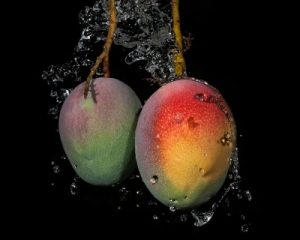
Supply Chain
Mangoes are climacteric fruit and have a short shelf-life compared to other fruit (Mohammed and Brecht, 2002; Nair and Singh, 2009). Supply chain considerations mean that when harvesting mangoes, suppliers pick at varying stages of maturity to achieve the most appropriate timings of delivery to the consumer or processor. This covers a range from an immature green, described as dark green, and with no shoulders, but ripening with poor quality, to ‘mature’ green which is a paler green, with shoulders and ripening to more acceptable quality. The best eating quality is defined as tree ripe with coloured fruit that ripens with optimum quality (Bender et al. 1997). Careful management is needed to manage this supply chain because the fruit is highly perishable with excessive softening when released pectinase enzymes begin to take effect (Haard and Chism 1996). The supplier relies on softening and ripening after picking and during transport unless this is suspended. A loss of fruit firmness however can reduce their marketability and increase their susceptibility to bruising and decay during shipping and transport. Low storage temperatures below 12 ºC halt flavour development and ripening, but also damage the soft tissue. Flavour changes are important during this phase of harvest and presentation to the consumer. The fruit must also be handled and packed carefully to avoid bruising (Mitra and Baldwin, 1997).
Cutting the fruit for slices and chunks also presents opportunities for improved product development but is hampered by their susceptibility to softening. There is rapid tissue softening, flavour loss and browning even on cooling below 12 ºC (Dea et al., 2010). As in most fruit, cutting causes cell integrity to breakdown with loss of compartmentalisation, a release of enzymes and other substances which induce fruit softening as a prelude to decay. For the consumer, loss of aroma and texture with browning represent serious issues in fruit choice (Beaulieu et al.,2003). Ameliorating these losses have been researched with some limited success using anti-browning agents, modified atmospheric packaging (Gonzalez-Aguilar et al., 2000), using carbohydrate polymer coatings (Plotto et al., 2004) and more recently with calcium chloride and calcium lactate as dips for cut pieces (Ngamchuachit et al., 2014).
A very comprehensive review is now available on the subject which covers processing and quality aspects of mango and its products (Siddiq et al., 2017). The cited chapter covers US Department of Agriculture data on the nutritional profile of raw mangoes, its nectar, and sweetened-dried mangoes.
Value In Mango Waste
The peel and seed too represent a commercial opportunity as they account for 35% and 60% respectively of the whole fruit. Given that much of the fibre is also found in peel, there is plenty of scope to extract and exploit it for its antioxidant value (Larrauri et al., 1996, 1997) which will be the subject of a separate post.
Mango Diseases Affecting The Supply Chain
Strenuous efforts have been made to reduce the disease susceptibility of both plant and fruit. Of the major diseases, anthracnose which is caused by Colletotrichum gloesporiodes attacks harvested fruit. This fungal attack is one of the most damaging causing serious quality deterioration and economic losses (Dodd et al., 1997; Zhang et al., 2013). It accounts for over 70% of all total fruit diseases and overcoming its potency would readily alleviate many of the spoilage issues associated with such a susceptible fruit as mango.
Attempts to reduce the use of synthetic fungicides by inducing natural fruit resistance has been an ongoing challenge. However, a number of studies which rely on biological and chemical elicitors have been viewed as the way forward in controlling post-harvest diseases like anthracnose. Salicylic acid (SA) shows some promise here. It is a natural plant substance which is produced in response to various biotic stresses. One study from Chinese researchers claims to have enhanced resistance to anthracnose by eliciting salicylic acid production which was directly responsible for reducing disease incidence (He et al., 2017). An added bonus was maintaining fruit firmness because pectin degradation was also minimised.
Revisions. 10th November 2019 – new material on anthracnose and mangiferin added.
References
Ackerman, L. G. J.; Torline, P. A. (1984) Volatile components in the headspace of eight mango cultivars. Lebens. Wiss. Technol. 17, pp. 339-341.
Bender, R.J., Brecht, J.K., Baldwin, E.A., Malundo, T. (1997) Effects of controlled atmosphere storage on aroma volatiles of ‘Tommy Atkins’ mangoes. In: Kader A.A. (Eds.), Proc. of the Seventh International Controlled Atmosphere Research Conference, vol. 3, Davis, CA, 13–18 July, p 82
Berardini, N., Fezer, R., Conrad, J., Beifuss, U., Carle, R., Schieber, A. (2005) Screening of mango (Mangifera indica L.) cultivars for their contents of flavonol O- and xanthone C-glycosides, anthocyanins, and pectin. J. Agric. Food Chem. 53 pp.1563–1570
Beaulieu, J.C., Lea, J.M. (2003) Volatile and quality changes in fresh-cut mangos prepared from firm-ripe and soft-ripe fruit, stored in clamshell containers and passive MAP. Postharvest Biol. Technol., 30(1) pp. 15-28
Brekke. J.E.. Cavaletto. C.G., Stafford, A.E., and Ghan. H.T. (1975) Mango: Processed Products. USDA, Agr. Res. Service, ARSW-23.
Dea, S., Brecht, J.K., Nunes, M.C.N., Baldwin, E.A. (2010) Occurrence of chilling injury in fresh cut ‘Kent’ mangoes. Postharvest Biol. Technol. 57 pp. 61-71.
, and 1997. Fruit diseases. In The Mango: Botany, Production and Uses (R.E. Litz, ed.) pp. 257–280, CAB International press, Wallingford, UK.
Food and Agriculture Organization (2005) FAOSTAT database collections on agricultural data, Food and Agriculture Organization of the United Nations. Accessed 13th October 2012
________________________ (2013) FAOSTAT. Available from: http://faostat.fao.org/site/535/DesktopDefault.aspx? PageID=535#ancor. Accessed 12th May 2014.
Garrido-Suárez, B. B., Garrido, G., Pineros, O., & Delgado-Hernández, R. (2019). Mangiferin: Possible uses in the prevention and treatment of mixed osteoarthritic pain. Phytotherapy Res., (Article)
, , . (2006) Quality changes and nutrient retention in fresh-cut versus whole fruits during storage. J. Agric. Food Chem. 54 pp. 4284–96.
Gholap, A.S., Bandyopadhyay, C, Nadkarni, G.B. (1986) Aroma development in mango fruit. J. Food Biochem. 10 pp. 217–229
, . (1987) Changes in individual carotenoids on processing and storage of mango (Mangifera indica) slices and puree. Int. J. Food Sci. Technol. 22(5) pp. 451–60.
, , , , , . (2008) Physiological and biochemical changes of different fresh-cut mango cultivars stored at 5°C. Int. J. Food Sci. Technol. 43 pp. 91–101.
Gorinstein, S., Haruenkit, R., Poovarodom, S., Vearasilp, S., Ruamsuke, P., Namiesnik, J., Leontowicz, M., Leontowicz, H., Suhaj, M., & Sheng, G. -P. (2010). Some analytical assays for the determination of bioactivity of exotic fruits. Phytochemical Analysis, 21, pp. 355−362.
Grundhofer, P., Niemetz, R., Schilling, G., Gross, G.G. (2001) Biosynthesis and sub cellular distribution of hydrolysable tannins. Phytochem. 57 pp. 915–927
, . (2012). Storage behavior of mango as affected by post harvest application of plant extracts and storage conditions. J. Food Sci. Technol. 51 pp.2499–507.
Haard, N.F., Chism, G.W. (1996) Characteristics of edible plant tissues. In: Fennema OR (ed) Food Chemistry, 3rd edn. Marcel Dekker, New York, pp 943–1011.
He, J., Ren, Y., Chen, C., Liu, J., Liu, H. and Pei, Y. (2017), Defense Responses of Salicylic Acid in Mango Fruit Against Postharvest Anthracnose, Caused by Colletotrichum gloeosporioides and its Possible Mechanism. Journal of Food Safety, 37: n/a, e12294. doi:10.1111/jfs.12294
Johnson, G.I., Sharp, J.L., Mine, D.L, Oostluyse, S.A. (1997) Postharvest technology and quarantine treatments. In: Litz RE (Ed), The Mango: Botany, Production and Uses. Tropical Research and Education Center, USA
Larrauri, J. A.; Goni, I.; Martin-Carron, N.; Rupe´rez, P.; Saura-Calixto, F. (1996) Measurement of health-promoting properties in fruit dietary fibres: Antioxidant capacity, fermentability and glucose retardation index. J. Sci. Food Agric. 71, pp. 515-519.
Larrauri, J. A.; Rupérez, P.; Saura-Calixto, F. Mango peel fibres with antioxidant activity. Z. Lebensm.-Unters. -Forsch. 1997, 205, pp. 39-42.
MacLeod, A. J.; MacLeod, G.; Snyder, C. H. (1988) Volatile aroma constituents of mango (cv Kensington). Phytochemistry 27 pp. 2189-2193.
Masibo, M. & He, Q. (2008). Major mango polyphenols and their potential significance to human health. Comp. Rev. Food Sci. and Food Safety 7, pp. 309–319.
Mitra, S.K., Baldwin, E.A. (1997) Mango. In: Mitra SK (ed) Postharvest physiology and storage of tropical and subtropical fruits. CAB, New York, pp 85–122
Mohammed, M., Brecht, J.K. (2002) Reduction of chilling injury in ‘Tommy Atkins’ mangoes during ripening. Sci. Hortic. 95(4) pp. 287–308.
Nair, S., Singh, Z. (2009) Chilling injury during storage affects respiration rate and fruit quality in Kensington Pride mango fruit. Acta Hort. 820 pp. 737–44.
Ngamchuachit, P., Sivertsen, H.K., Mitcham, E.J., Barrett, D.M. (2014) Effectives of calcium chloride and calcium lactate on maintenance of textural and sensory qualities of fresh-cut mangos. J. Food Sci., 79 (5) C786-794
Pandit S S, Kulkarni R S, Chidley H Q, et al. (2009) Changes in volatile composition during fruit development and ripening
of‘alphonso’mango [J]. Journal of the Science of Food and Agriculture, 89(12) pp. 2071-2081
Pino, J.A., Mesa, J., Munoz, Y., Marti, M.P., Marbot, R. (2004) Volatile Components from Mango (Mangifera indica L.) cultivars. J. Agric. Food Chem., 53 pp. 2213-2223
Plotto, A., Goodner, K.I., Baldwin, E.A. (2004) Effects of polysaccharide coatings on quality of fresh-cut mangoes (Mangifera indica). Proc. Fla. State Hort. Soc. 117 pp. 382-384
Sauco, V.G. (2004) Mango production and world market: current situation and future prospects. Acta Hort. 45 pp. 107–116
Siddiq, M., Sogi, D. S. and Roidoung, S. (2017) Mango Processing and Processed Products, in: Handbook of Mango Fruit: Production, Postharvest Science, Processing Technology and Nutrition (eds M. Siddiq, J. K. Brecht and J. S. Sidhu), John Wiley & Sons, Ltd, Chichester, UK. doi: 10.1002/9781119014362.ch10
Pott, I., Breithaupt, D. E., & Carle, R. (2003). Detection of unusual carotenoid esters in fresh mango (Mangifera indica L. cv. ‘Kent’). Phytochemistry, 64, pp. 825−829.
Robles-Sanchez, R.M., Islas-Osuna, M.A., Astiazaran-Garcia, H., et al. (2009). Quality index, consumer acceptability, bioactive compounds, and antioxidant activity of fresh-cut “Ataulfo” mangoes (Mangifera indica L.) as affected by low-temperature storage. J. Food Sci., 74, S126–S134.
Schieber, A., Ullrich, W., Carle, R. (2000) Characterization of polyphenols in mango puree concentrate by HPLC with diode array and mass spectrometric detection. Innov. Food Sci. Emerg. Technol. 1 pp. 161–166
Vinci, G., Botre, F., Mele, G., Ruggieri, G. (1995) Ascorbic acid in exotic fruits: a liquid chromatographic investigation. Food Chem. 53 pp. 211–214
, , , , , and 2013. β-Aminobutyric acid induces resistance of mango fruit to postharvest anthracnose caused by Colletotrichum gloeosporioides and enhances activity of fruit defense mechanisms. Sci. Hortic. 160, pp. 78–84.
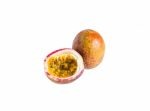
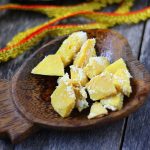

Nice post. I want to buy a couple of Mango plants that they can thrive in Athens Greece, I live 5 km from the coast, can you please advice me what type of mango can I purchase? Further I would like also advice for what type of Papaya tree to purchase.
Thanks
Andreas
Back in India, around Hyderabad, we have lots of mango groves but I think the cultivated forms like Alphonso are the best. Never seem to taste the same in other countries and I don’t know why. I like the idea of creating fruit leathers. It’s getting so hot now that it is easy to dry and bake the fruit at the same time. Might as well make use of the Sun as we have so much of it.